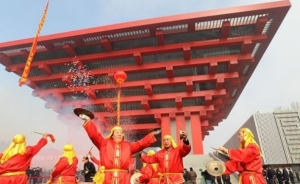Review: The United States and Public Diplomacy: New Directions in Cultural and International History
The United States and Public Diplomacy is the fifth in a multivolume series published by Clingendael under the masthead, “Diplomatic Studies”. The present volume is a collection of twelve original essays on the history of public diplomacy.
The book should be of interest to scholars of public diplomacy and U.S. history. It provides novel perspectives on historical events, focusing attention on aspects of the field that have received insufficient study to date. It also endeavors to provide practical insights, suggesting contemporary applications for lessons learned in the past.
Although this book may not hold much appeal beyond the community of scholars, practitioners, and public diplomacy enthusiasts, teachers of history and public diplomacy should pay particular attention to it. The essays contained in this volume are appropriate for college and graduate level course syllabi. They are well written, prescient, and easily stand alone.
The title, The United States and Public Diplomacy: New Directions in Cultural and International History is a rather inelegant effort to describe the diverse set of monographs included in this volume. It is also a bit of a mind bender. What is “Cultural and International History” and how can it go in “New Directions”? It takes an advanced degree just to unpack what this means.
Six of the essays examine past U.S. public diplomacy campaigns. The other six focus on public diplomacy as practiced by foreign governments and non-state actors. Several essays describe the role of film, art, and culture in public diplomacy. Others focus on international informational campaigns. And others suggest new directions for future research.
Representing a cross-section of current public diplomacy research, this collection provides twelve interesting essays from across the field. At least half of the essays explicitly involve public diplomacy in countries other than the United States (demonstrating another problem with the title The United States and Public Diplomacy.) The other half of the essays address under-explored parts of U.S. public diplomacy history including: the origins of U.S. public diplomacy in the period before the Cold War, U.S. public diplomacy campaigns targeting the developing world, and the historical use of film in U.S. public diplomacy.
In their introduction to The United States and Public Diplomacy, editors Kenneth Osgood and Brian C. Etheridge complain that the “global conversation” about public diplomacy has, “focused inordinately on the United States,” (p.5) and has been, “taking place in something of a historical vacuum.” (p.6) The essays in this volume redress these shortcomings.
The book opens with Jessica C.E. Gienow-Hecht’s essay, on “Cultural Diplomacy and Civil Society since 1850”. Gienow-Hecht, urges public diplomacy scholars to expand their historical scope beyond the Cold War. Gienow-Hecht suggests that the early 20th century bears greater similarity to the present era. Around the turn of the century, European cultural diplomacy was the province of professional groups, non-governmental organizations, and, occasionally, partnerships between these groups and the State. These arrangements were beneficial to the State. They required less capital outlay, less commitment of bureaucratic resources, and left planning in the more experienced hands of producers and distributors. Distance from the State allowed a greater range of artistic license and risk-taking. This model was not without its attendant risks. Corporations and civil society groups did not always share the State’s view of the national interest, and sometimes acted at cross purposes to the State’s diplomatic goals. As Gienow-Hecht reflects on the current state of the field she sees many similarities.
U.S. policymakers are unwittingly re-creating cultural diplomacy along lines drawn by Europeans at the turn of the century at a time when America was a net consumer, rather than a net producer of cultural diplomacy products. Current U.S. cultural diplomacy efforts are likely to face the same challenges as their historical analogues.
As a candidate for the U.S. Presidency, Barack Obama articulated a vision for American cultural diplomacy based on public-private partnerships. Now, as President Obama and his staff work to implement this vision, they should bear in mind the historical examples that predate both institutional memory and recent scholarship on Cold War cultural diplomacy.
Gienow-Hecht’s article exemplifies both the strengths and the weaknesses of the volume. All of the essays are excellent. The quality of research and writing is consistently impressive but there is one systematic weakness: conclusions appear to have been stitched onto some of the articles, in order to prove their relevance to the overall work. The essay by Gienow-Hecht was among the more egregious in this regard. Her mention of the Obama administration seems to be a bit of an after-thought. No doubt, it satisfied the requests of the editors, but it is somewhat jarring for the reader.
Nevertheless, this weakness detracts little from the quality of the book. The United States and Public Diplomacy showcases fascinating new research into the history of public diplomacy. Each essay adds a fresh perspective to the narrative with impressive research and writing throughout. Collectively, they represent a significant contribution to the emerging literature on public diplomacy.
Tags
Issue Contents
- The View From CPD May/June 2010
- The 2010 Shanghai Expo, Cultural Diplomacy, and a Tale of Three States: China, North Korea and the US
- The Diplomatic Component of Expos
- CPD’s Shanghai Expo Blogs and Video Conversations
- The USA Pavilion’s Human Element
- PD and the Gaza Flotilla
- Review: The United States and Public Diplomacy: New Directions in Cultural and International History
Most Read CPD Blogs
-
November 3
-
November 5
-
November 13
-
November 25
-
November 17
Visit CPD's Online Library
Explore CPD's vast online database featuring the latest books, articles, speeches and information on international organizations dedicated to public diplomacy.









Add comment